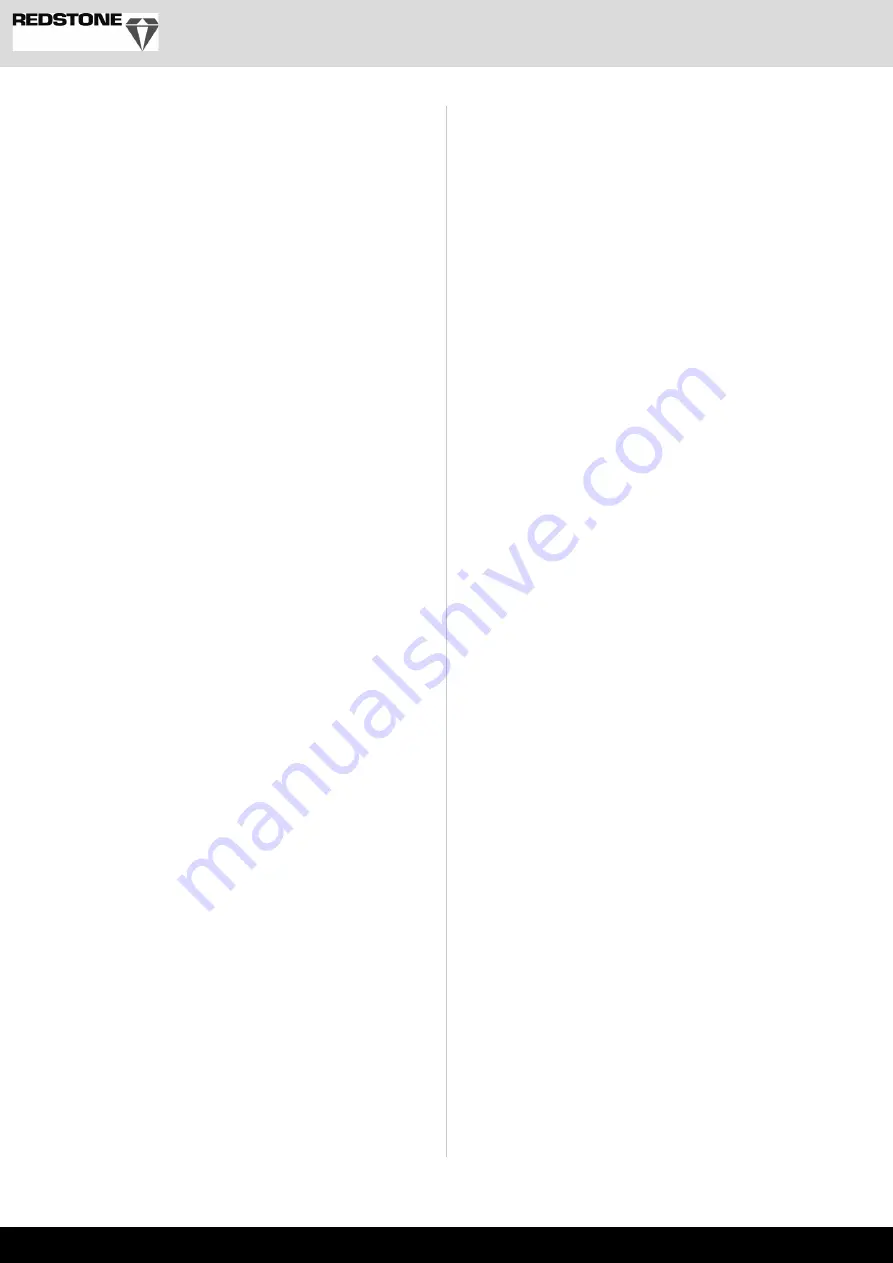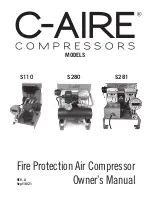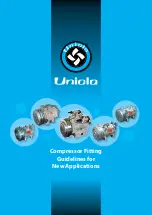
20 | GB
• When releasing the hose coupling, hold the hose
coupling piece with your hand.
• This way, you can protect yourself against injury
from the rebounding hose.
• Wear safety goggles and a respirator when working
with the compressed air pistol. Dusts are harmful to
health!
Foreign objects or blown off parts can easily
cause injuries.
• Do not blow at people with the blow-out pistol and
do not clean clothes while being worn. Risk of in-
jury!
Safety instructions when using spraying attach-
ments (e.g. paint sprayers):
• Keep the spray attachment away from the com-
pressor when filling so that no liquid comes into
contact with the compressor.
• Never spray in the direction of the compressor
when using the spraying attachments (e.g. paint
sprayers). Moisture can lead to electrical hazards!
•
Do not process any paints or solvents with a flash
point below 55° C. Risk of explosion!
• Do not heat up paints or solvents. Risk of explo-
sion!
• If hazardous liquids are processed, wear protective
filter units (face guards).
Also, adhere to the safety
information provided by the manufacturers of such
liquids.
• The details and designations of the Ordinance on
Hazardous Substances, which are displayed on the
outer packaging of the processed material, must be
observed. Additional protective measures are to be
undertaken if necessary, particularly the wearing of
suitable clothing and masks.
• Do not smoke during the spraying process and/or
in the work area. Risk of explosion! Paint vapours
are easily combustible.
• Never set up or operate the equipment in the vicin-
ity of a fire place, open lights or sparking machines.
• Do not store or eat food and drink in the work area.
Paint vapours are harmful to your health.
•
The work area must exceed 30 m³ and sufficient
ventilation must be ensured during spraying and
drying.
• Do not spray against the wind. Always adhere to
the regulations of the local police authority when
spraying combustible or hazardous materials.
• Do not process media such as white spirit, butyl
alcohol and methylene chloride with the PVC pres-
sure hose. These media will destroy the pressure
hose.
• The work area must be separated from the com-
pressor so that it cannot come into direct contact
with the working medium.
Operation of pressure vessels
• Anyone who operates a pressure vessel must keep
this in good working order, operate and monitor it
correctly, perform the necessary maintenance and
servicing works immediately and implement safety
measures as required according to the circum-
stances.
16. Attention!
- For your own safety, only use accessories and
additional equipment that are indicated in the op-
erating manual or have been recommended or
indicated by the manufacturer. Use of other tools
or accessories that those recommended in the
operating manual or in the catalogue could rep-
resent a personal danger to you.
17. Noise
- Wear hearing protection when using the com-
pressor.
18. Replacing the connection line
- If the connection line is damaged, it must be re-
placed by the manufacturer or an electrician to
avoid danger. There is a risk of electric shock
19.
Inflating tyres
-
Check the tyre pressure immediately after filling
using a suitable pressure gauge, e.g. at a petrol
station.
20. Street-legal compressors in construction site op-
eration
-
Ensure that all hoses and fixtures are suitable for
the maximum permissible working pressure of
the compressor.
21. Set-up location
-
Only set up the compressor on a flat surface.
22. It is recommended to equip the feed hoses with a
safety cable in case of pressure above 7 bar, e.g.
using a wire cable.
23. Avoid over-stressing the piping system by using
flexible hose connections to prevent kinking.
24. Use a residual current circuit breaker with a trig-
ger current of 30 mA or less. Use of an RCD re-
duces the risk of electric shock.
m
WARNING!
This power tool generates an elec-
tromagnetic field during operation.
This field can im
-
pair active or passive medical implants under certain
conditions. In order to prevent the risk of serious or
deadly injuries, we recommend that persons with
medical implants consult with their physician and the
manufacturer of the medical implant prior to operat-
ing the power tool.
ADDITIONAL SAFETY INSTRUCTIONS
Observe the corresponding operating manuals
of the respective compressed air tools / com-
pressed air attachments!
The following general in-
structions must also be observed:
Safety instructions for working with compressed
air and blasting guns
•
Ensure there is sufficient distance to the product,
at least 2.50 m, and keep the compressed air tools
/ compressed air attachments away from the com-
pressor during operation.
• The compressor pump and lines can become very
hot during operation. Touching these parts will burn
you.
• The air which is sucked in by the compressor must
be kept free of impurities that could cause fires or
explosions in the compressor pump.
Summary of Contents for 5906101924
Page 2: ...2...
Page 3: ...3 ON OFF 2 15 16 1 16 12 2 8 9 10 1 4 6 3 5 7 14 13 11 3 7 17 5 14 14 17 1 17 2 17 3 3...
Page 4: ...4 20 15 14 19 21 22 9 20 23 24 24 25 11 11 4 14 20 22 19 21 5 11 9 6 A 7 14 8 B 9...
Page 5: ...5 15 18 10 m i n m a x 12 11 C D E G 12 C D E F 13...
Page 35: ...GR 35 dB...
Page 36: ...36 GR 1 37 2 37 3 37 4 38 5 38 6 40 7 41 8 41 9 42 10 42 11 44 12 44...
Page 38: ...38 GR 3 4 5 6 7 8 9 10 11 12 4 272 l min 5 m m 1 2...
Page 39: ...GR 39 20 21 22 7 bar 23 24 30 mA m 2 50 m 13 14 15 16 17 18 19...
Page 44: ...44 GR 12 5 C 17 10 5 10 9 11 2012 19...
Page 55: ...55...
















































